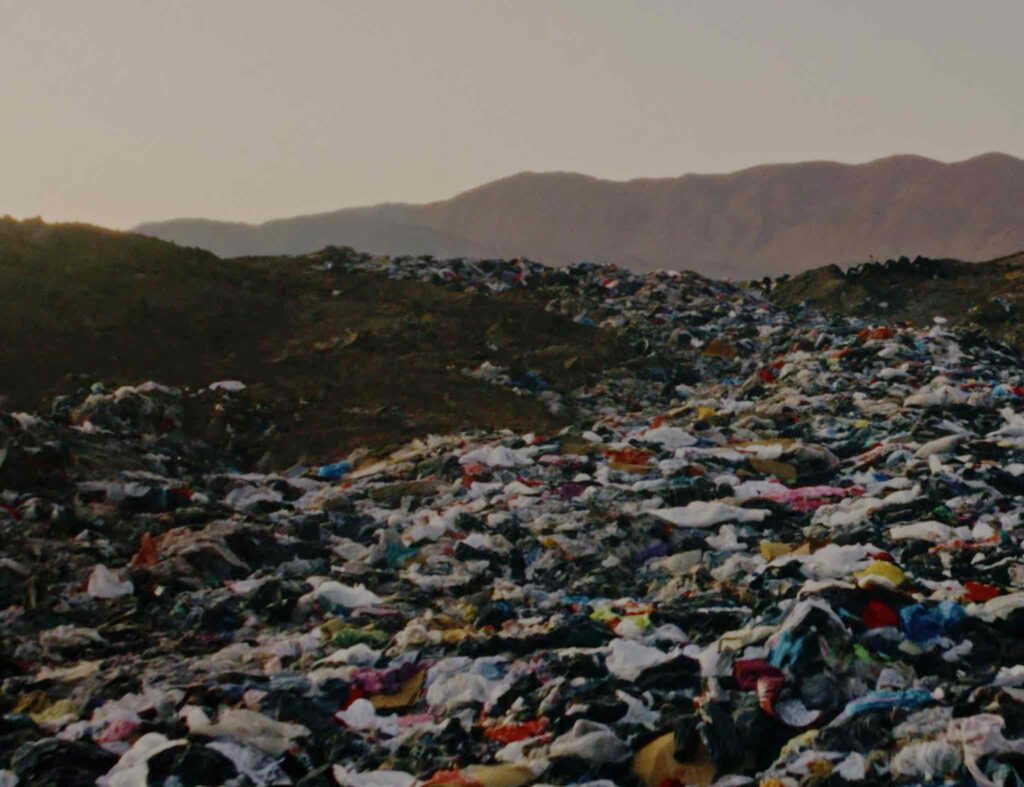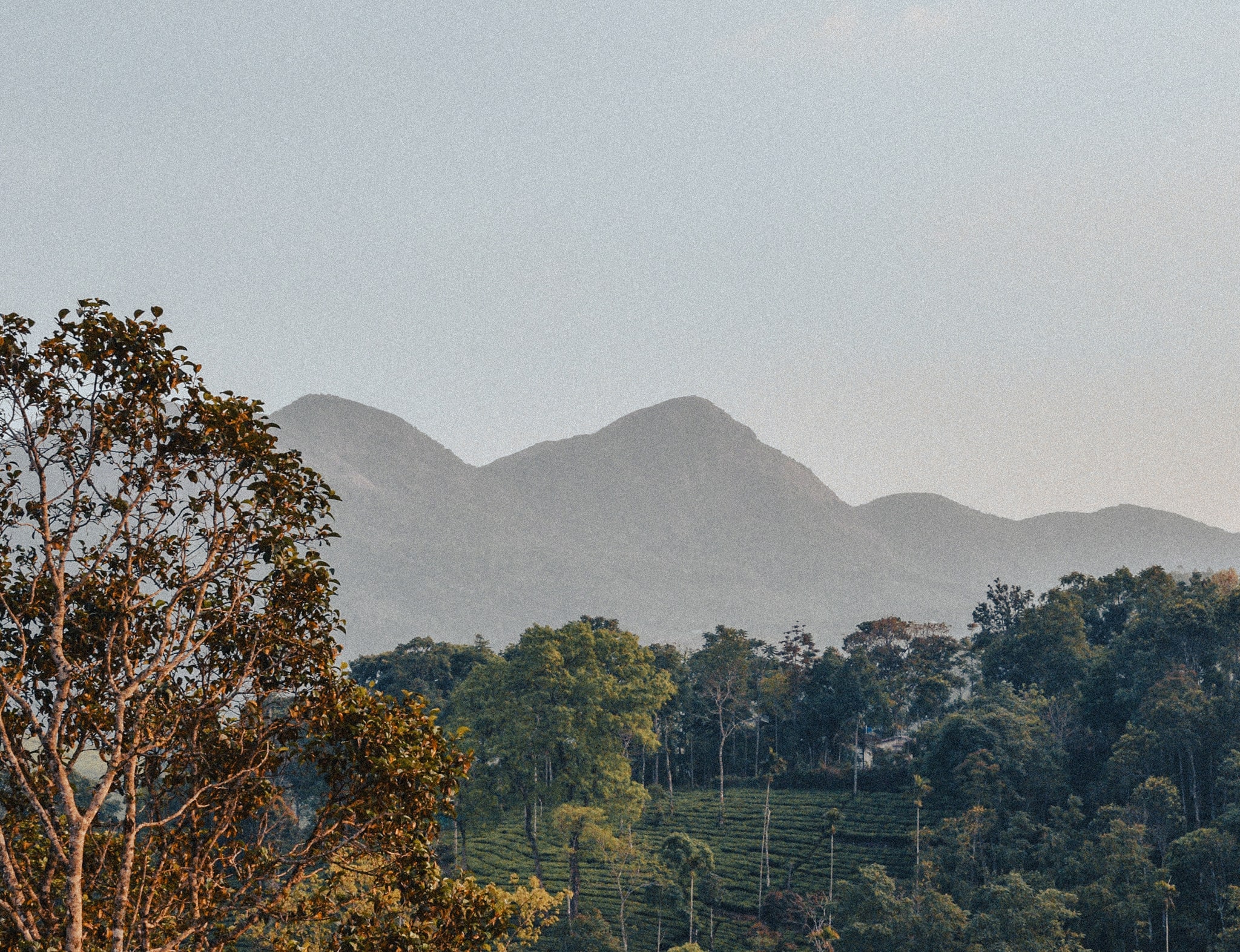Landfills represent the aftermath of uncontrolled consumerism.
Valeria KohnThreadbare Earth: Atacama's Orbital Wardrobe | Valeria Kohn

Have you ever stopped and wondered, where do all my clothes end up? Where do the hundreds or even thousands of pieces of clothes that have passed through my closet since I was born, end up? Perhaps someone, somewhere is wearing them? Or were they burned? This uncertainty prompts inquiries into the biodegradability of these garments and the consequences of our choices on the environment.
As a society, we are drawn to what we see on social media, on display or what’s deemed trendy, and out of reflex, we buy it. We give a great deal of attention to what the new ‘it’ girl is wearing and buying, without considering what the ripple effect of this will be. We eagerly adopt the latest ‘TikTok famous’ products, contributing to fleeting trends that often only last a couple of weeks if we’re lucky.
It’s normal to cycle through clothes more frequently as we grow up, as we tend to outgrow them until they no longer fit. However, the problem with today’s fashion industry lies within the concept of fast fashion. A continuous and rapid turnover of clothing trends shows that brands prioritise producing large quantities of inexpensive clothing to swiftly respond to ever-changing trends. Consequently, we have adopted a ‘wear and discard’ culture where, for some, even wearing the same thing twice is considered a faux pas. Fast fashion giants like Zara, H&M, Bershka, and Shein update their stock sometimes as often as twice a week. This constant turnover encourages consumers to make hasty purchases with little consideration, fearing they may miss a trend or that an item may not be available in the future. Impulsive consumer behaviour like this is the result of a system specifically designed as such and in the name of maximum profit, all too often causing consumers to regret purchases and leading to unworn and discarded clothing.
“Fast fashion creates 92 million tons of textile waste each year”.
DW News
“You felt like a kid in a candy store”, “You could just walk right in and anything you liked you could just buy it. You coil load up, and you felt like a princess” (Overdresses, Elizabeth L. Cline). Shopping becomes an addiction, and over-consumption becomes the new normal. We take no time to think about what we are buying, nor time to think about what happens when we throw our clothes away. Meanwhile, we take everything into consideration when planning an outfit. Appearances have become more important than taking care of our planet. Once the clothes we no longer use are disposed of, they go through a process. Even if they are resold or donated, they will always reach the end of their life cycle, where we can find them in landfills.
The Atacama Desert of northern Chile, the driest desert on Earth, is currently facing a concerning threat as it transforms into one of the largest and most rapidly expanding clothing disposal sites. “It is an environmental and societal emergency” (said by the United Nations). Chile is now even called ‘The Great Pacific Garbage Patch’. The country is one of the largest duty-free ports and one of the largest importers of second-hand clothes. More specifically, the city of Iquique has a free trade zone (FTZ), which facilitates the movement of goods (imports and exports), storage, and creates a space for manufacturing and industrial processing. An FTZ fosters international trade, attracts foreign investment and stimulates economic development. Therefore, Chile has become a significant recipient of clothing, with dumps that are now visible from satellites in space via SkiFi, which shows their views from orbit.
“The size of the pile and the pollution it’s causing are visible from space, making it clear that there is a need for change in the fashion industry”
SkiFi
In 2022, according to Chilean customs, 60 million tons of clothing arrived in the South American country. This clothing is processed by textile recyclers who decide if the clothing will be resold for second-hand use or taken to the desert to be dumped. “The problem is that only 15% is sold, 85% end up in clandestine dumps” (BBC News).
Landfills represent the aftermath of uncontrolled consumerism.
These clothes come from all over the world, but just by looking at this one step of the process, we are looking at millions of metric tons of greenhouse gas emissions, pollution, and, to keep it simple, a staggering carbon footprint. Chileans are facing drastic problems with this inflow of discarded clothing, as it not only exacerbates environmental concerns but also the socio-economic challenges confronted by both local communities and incoming migrants.
Another disposal method being used is incineration, which leads to annual fires, contributing to water and air pollution due to the significant emissions of smoke.
Nowadays, clothing is predominantly composed of polyester, a synthetic polymer that not only takes hundreds of years to biodegrade but also contains toxic components. The pollution from these garments affects the local ecosystem, threatening the unique diversity of the desert and the health of hundreds of people living in the Atacama region. It transforms the region into an uninhabitable environment, with its population exposed to inhaling smoke and gases on a daily basis.
Upon reaching the landfill, masses of discarded clothing take on diverse fates. Migrants coming from Bolivia and Venezuela, crossing the desert to enter Chile, often arrive with nothing and visit these dumps to acquire new clothes. The same happens with locals from Iquique, who collect clothes for their family or that could be sold again. This complex dynamic reflects the multifaceted ways in which these discarded garments are repurposed and redistributed in some way within the community.
Society is in fact embarking on the sustainable journey, with the Chilean community’s innovative efforts to repurpose and embrace eco-friendly alternatives. For instance, there is a startup called ‘EcoFibra’; a company with the goal of transforming textile waste into ecological panels for thermally and acoustically insulating buildings, which has already been used for more than 100 homes in the northern part of Chile. Ecocitex is another company based in Santiago which is dedicated to repurposing second-hand yarn to create new clothing. There are many examples of people making an effort to address the crisis, but the most impactful initiative capable of instigating real change in this scenario is the involvement of the Chilean government. Specifically, including the textile category in the Chilean ‘Ley REP’ law makes producers and importers accountable for the waste of their products. “Converting Chile from a junkyard into a recycling hub would be the dream, but first we need to add textiles to the Ley REP” (Tomàs Saieg, National Geographic).
Our responsibility extends beyond personal choices; we are part of a global community. The social and economic impact we make through our clothing echoes worldwide.
We must reconsider our buying habits, opting for sustainable choices and supporting ethical practices in the fashion industry. By choosing vintage, second-hand shopping and considering donating unused clothes to people, we become conscious about our actions and aware of the lives of our garments. The power is within us; we can advocate for systemic change and help contribute to a more sustainable and equitable future, where fashion doesn’t come at the expense of the people and the planet.
Words by Valeria Kohn




